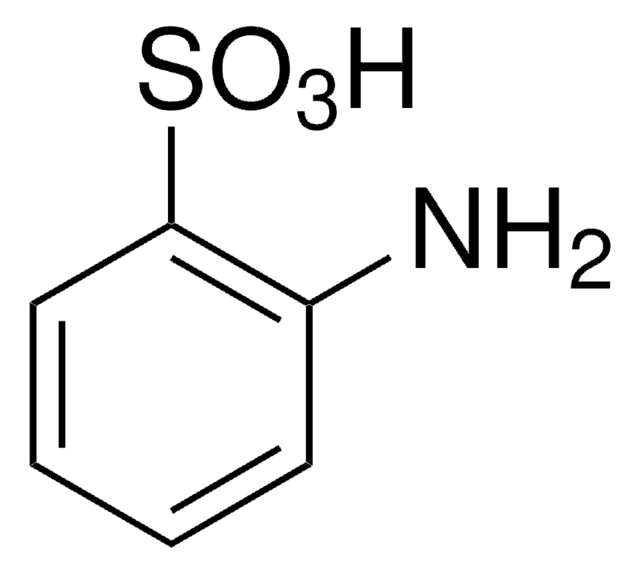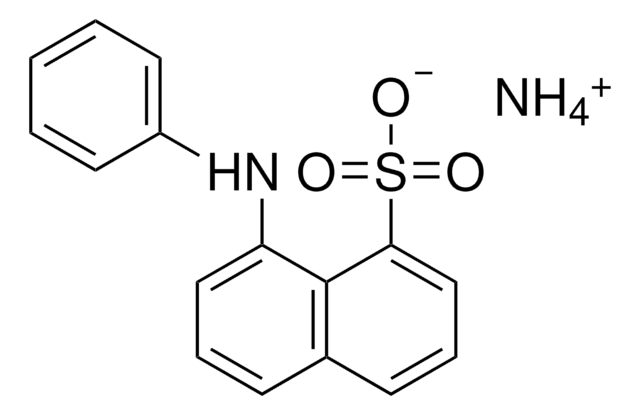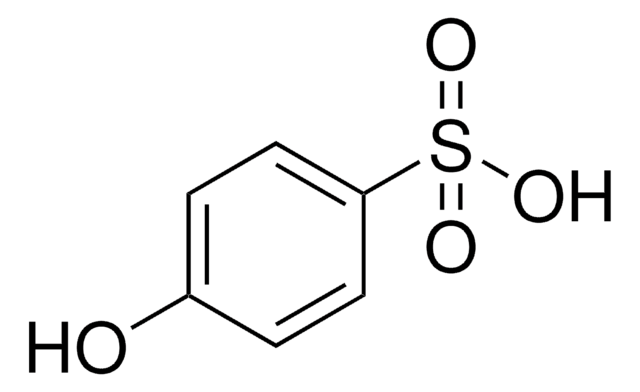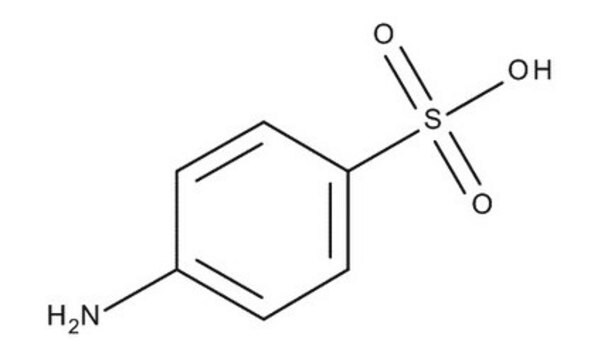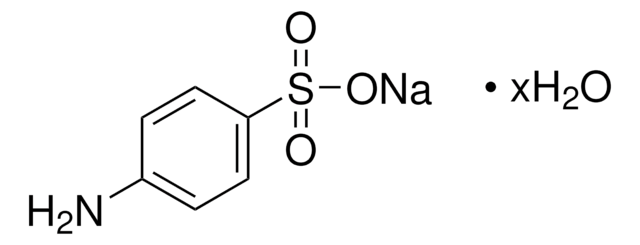おすすめの製品
詳細
3-アミノベンゼンスルホン酸は、シュードモナス種株S-313によって3-アミノフェノールへの微生物脱スルホン化を受けます。
アプリケーション
3-アミノベンゼンスルホン酸は、細胞適合性スルホン化ポリアニリンの合成に使用されました。大きな活性表面積と優れた伝導性を有する新規グルコースバイオセンサーの製作に使用されました。
シグナルワード
Warning
危険有害性情報
危険有害性の分類
Acute Tox. 4 Dermal - Acute Tox. 4 Inhalation - Acute Tox. 4 Oral
保管分類コード
13 - Non Combustible Solids
WGK
WGK 1
引火点(°F)
Not applicable
引火点(℃)
Not applicable
個人用保護具 (PPE)
dust mask type N95 (US), Eyeshields, Gloves
適用法令
試験研究用途を考慮した関連法令を主に挙げております。化学物質以外については、一部の情報のみ提供しています。 製品を安全かつ合法的に使用することは、使用者の義務です。最新情報により修正される場合があります。WEBの反映には時間を要することがあるため、適宜SDSをご参照ください。
Jan Code
165794-VAR:
165794-1KG:
165794-BULK:
165794-250G:
この製品を見ている人はこちらもチェック
Xiaojun Chen et al.
Analytica chimica acta, 723, 94-100 (2012-03-27)
In this paper, a three dimensional ordered macroporous self-doped polyaniline/Prussian blue (3DOM SPAN/PB) bicomponent film was fabricated via the inverted crystal template technique using step-by-step electrodeposition. In this bicomponent film, PB not only acted as a redox mediator, but also
Simon Doswald et al.
Chemistry (Weinheim an der Bergstrasse, Germany), 27(12), 4108-4114 (2020-12-23)
The functionalization of magnetic nanoparticles has been an important field in the last decade due to the versatile applications in catalysis and biomedicine. Generally, a high degree of functionalities on the surface of the nanoparticles is desired. In this study
D Zürrer et al.
Applied and environmental microbiology, 53(7), 1459-1463 (1987-07-01)
Sulfur-limited batch enrichment cultures containing one of nine multisubstituted naphthalenesulfonates and an inoculum from sewage yielded several taxa of bacteria which could quantitatively utilize 19 sulfonated aromatic compounds as the sole sulfur source for growth. Growth yields were about 4
Yanyin Yang et al.
Macromolecular rapid communications, 32(12), 887-892 (2011-05-19)
We report here that by good design, polyaniline (PANI) can be cytocompatible and formed into usable scaffolds for bio-medical applications. By adjusting the ratio of two monomers, aniline (AN) and metanilic acid (MA), a series of copolymers with different sulfonation
Mei-Hwa Lee et al.
Biosensors & bioelectronics, 150, 111901-111901 (2019-11-27)
Molecularly imprinted polymers (MIPs) have been developed to replace antibodies for the recognition of target molecules (such as antigens), and have been integrated into electrochemical sensing approaches by polymerization onto an electrode. Electrochemical sensing is inexpensive and flexible, and has
ライフサイエンス、有機合成、材料科学、クロマトグラフィー、分析など、あらゆる分野の研究に経験のあるメンバーがおります。.
製品に関するお問い合わせはこちら(テクニカルサービス)
